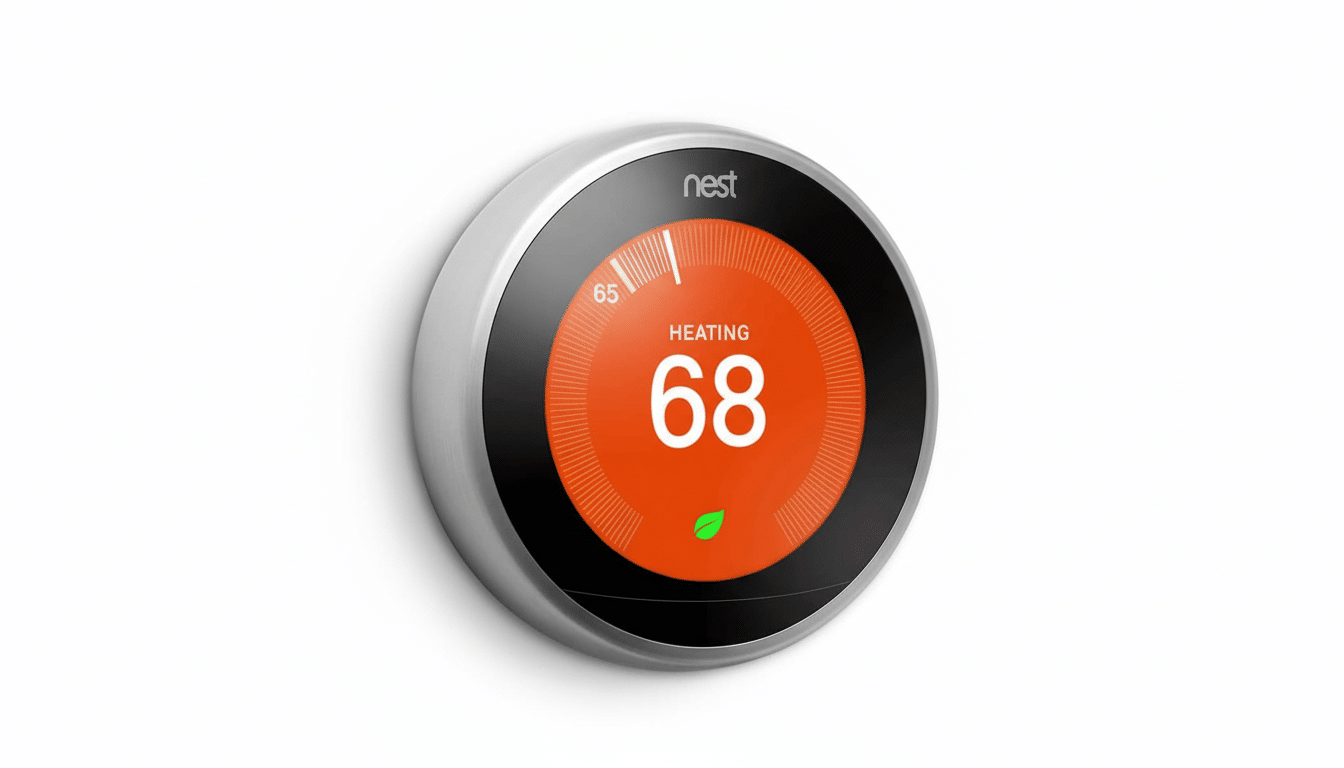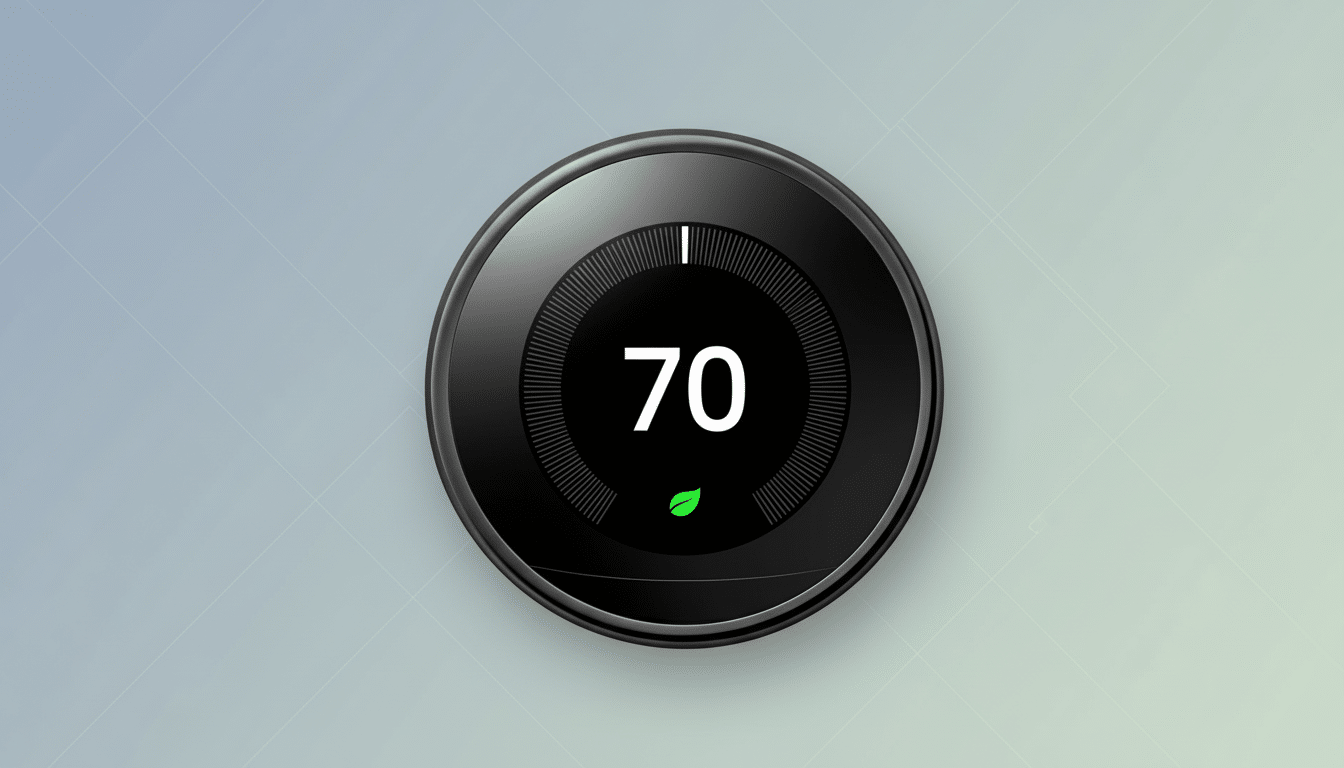Google is giving the new Nest Learning Thermostat a visual refresh: the search giant began rolling out an updated version of its smart thermostat on Monday that replaces its circular display with a 2.5-inch mini touchscreen and includes versions of some classic works of art.
A new batch of Farsight faces, including animated art and a revamped control experience, is designed to make the device feel like decor rather than just another tool. It’s a minor update that has an oversized impact: your thermostat is now able to greet you from across the room with style as well as substance.

What’s New in Farsight for Nest Thermostat Owners
Farsight, the Nest feature that turns on when it detects you from far away, is adding four more styles to its offering for the fourth-generation Nest Learning Thermostat. In addition to the familiar clock, weather, and temperature screens, you can select Seasonal art, Minimal mode, Nest classic, and a Temperature controller. Each is designed to be glanceable, animated, and legible from across a room — without turning your wall into a blinking billboard.
Monthly Animations That Double as Seasonal Art
The featured collection is a curated series called Seasonal, in collaboration with illustrator Mathilde Loubes. Gently animated faces — 12 unique ones, one for each month — cover motifs such as flowers and fruit. The art changes automatically as the calendar flips; so be prepared for a pumpkin in October, a snow-covered pine cone in December, and other clever allusions to the season at hand. It’s ambient, playful, and quiet enough to belong in any living space.
A Hat Tip To The Original And Faster Control
The Nest classic face: for longtime fans, the Nest classic face reflects the nostalgic housing design of the original thermostat; it combines old-school simplicity with advanced technology and that familiar vintage twist deep in our memories. Nest screensaver — 24-bit color LCD: The beautifully designed layout options focus on colors that fade across like greens and blues, and when turned off, it fades altogether, leaving no trace.
Minimal mode goes the other way, stripping visuals back to simple animated cues for heating, cooling, and eco states — handy if you’re more interested in information than decoration. The display also becomes a quick-adjust dial when the Temperature controller kicks in, making it more intuitive to adjust the setpoint without having to swim through menus.

Why Design Is Important For Energy Savings
There’s more here than pretty eye candy. Behavioral studies have consistently demonstrated that timely, engaging feedback can influence energy decision-making. According to the American Council for an Energy-Efficient Economy, real-time feedback programs can reduce residential energy consumption by roughly 4% to 12%. ENERGY STAR says smart thermostats can save about 8 percent on heating and cooling costs annually, while earlier analyses by Nest suggested average savings of 10 to 12 percent in heating and around 15 percent in cooling. An attractive, readable display that shows enough information makes it easier for people to interact with it — and maintain more efficient setpoints.
Importantly, Farsight isn’t a nonstop light show by default. The thermostat screen wakes up to show you the time, temperature, or weather when it sees you walking by from across the room, while at-a-glance viewing lends itself to being energy-efficient. That helps keep the device’s energy footprint small, while also making the information feel current when you need it.
How to Switch Farsight Faces on Your Thermostat
It takes less than a minute to change the appearance. Press the middle of the thermostat ring, scroll to Settings, and tap Farsight. From here, swipe through the options that already exist — Seasonal, Minimal mode, Nest classic, and Temperature controller — and choose your favorite. You can also be brave and try some experiments to see what works best for your room (and perhaps even how you live in it).
The Bigger Smart Home Picture Behind This Update
This update is a reflection of a larger change taking place in the smart home: utility gadgets are becoming ambient objects that contribute to character, like TVs with art modes or smart displays that double as photo frames. Mixing interface with art, Google is trying to close the gap between interface design and how we use power in our daily lives. The energy savings of the Nest Learning Thermostat have long appealed to simplifiers and technology enthusiasts who do not like their bills going in the opposite direction, but now it feels just as good as it looks.
If you’ve come to the tail end of the thermostat cycle, thinking of it as background hardware, these new faces ask you to think again about how a backdrop can be designed. It’s still a thermostat — just one with its own mini gallery included.

